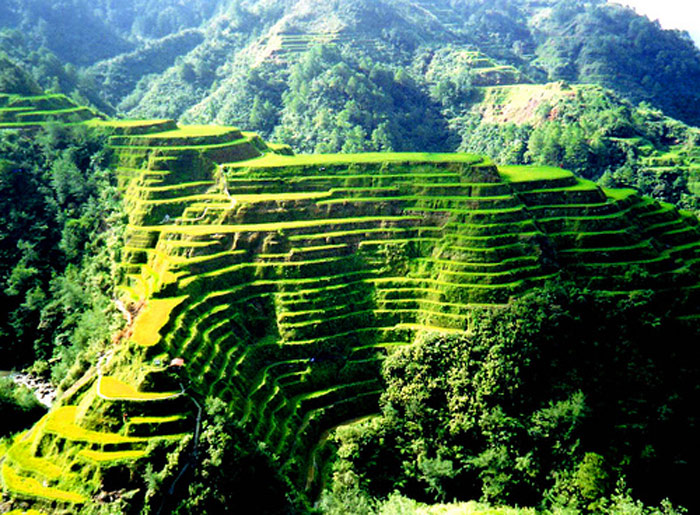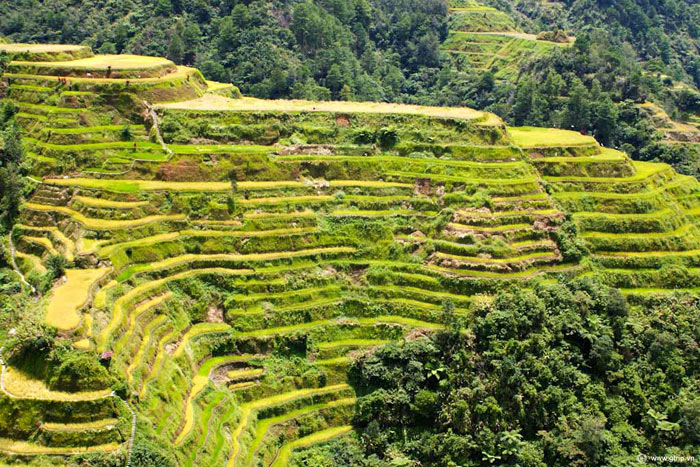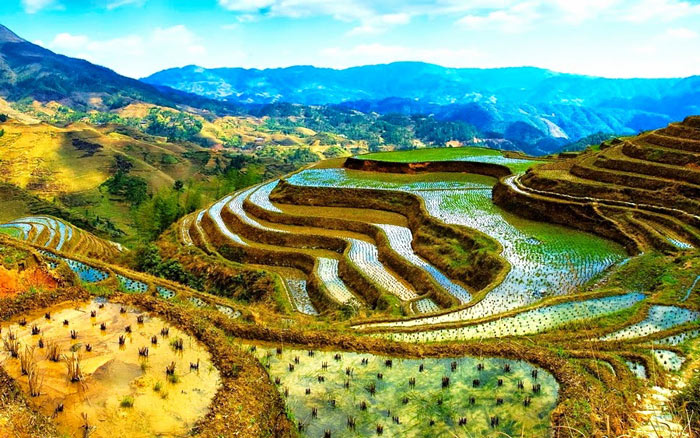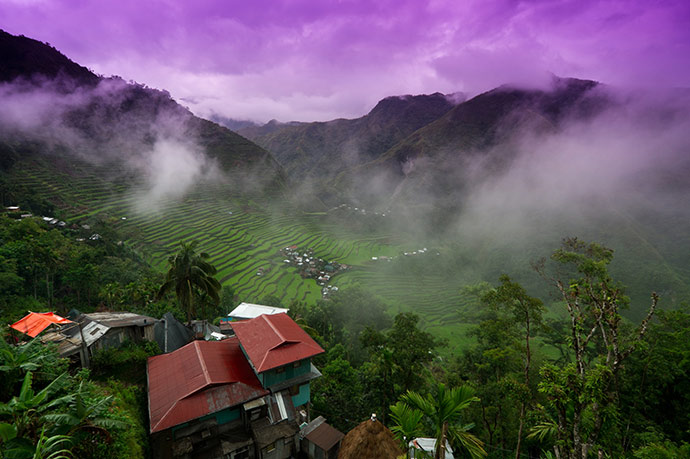The terraces at Philippine Cordilleras
The United Nations Science, Education and Cultural Organization has recognized the Philippine Cordilleras as a World Cultural Heritage in 1995.

The terraced fields in the Philippine Cordilleras are an ancient man-made structure that has a history of 2000 to 6000 years found on the mountains of Ifugao province. These terraced fields are created by the ancestors of indigenous people. Researchers believe that these terraces were built primarily by hand at a time when there were very few supporting tools. These terraces are 1,500 meters above sea level and have an area of 10,360 km2. These terraced fields are nourished and irrigated by a natural irrigation system that flows from the top of the mountain.

Terraced rice cultivation is a unique type of cultivation in Southeast Asia, terraced fields are a type of wet rice cultivation on hilly terrain with a rather sophisticated irrigation system to provide water for the growth of rice. It can be said that terraced farming exists in a unique way in Southeast Asian countries, including China, Vietnam, Thailand, Indonesia, and the Philippines.

In the Philippines in some localities like Luzon, Man Da Nao, Pan Na Wan . have the Ifugao clan , these are the creators of the world's most unique type of farming in agricultural activities. Traditional career.
For more than 2000 years, the high-lying rice fields were slowly built up by the Ifugao contours running around the mountains and replicated in a large area. Cultivation knowledge is passed from generation to generation as a sacred tradition of the nation.

For the early years of the twentieth century, the Iflugao people in the Philippines remained a nation of great concern among scientists and ethnologists in the world. Scientists pay special attention to this ethnic group because of their unique characteristics of residence practices as well as their production activities, religious rituals and terraced fields. The Philippine government has made great efforts to assimilate and abolish the gap between the Iflugao people and the common people in the Philippines, but it seems to be unmovable. With a population of approximately 120,000 people scattered in a large area of up to 1,120 km2, where the terrain is rugged, jagged with rocky mountains and many storms. Iflugao people still live and cultivate on terraced fields where they are the creators and their owners. In their traditional agricultural activities , the Iflugao people have a very close connection with rice as well as magic rituals, worshiping around rice.

The terraces at the Philippine Cordilleras in Luzon are an image, a concrete demonstration of the farming practices of Filipino peoples. These terraced fields are recognized by Unesco according to the following criteria:
Criterion (iii): The terraced fields in the Philippine Cordilleras are a strong testament to the sustainable system and are the main form of rice production of the Ifugao people for more than 2 millennia.
Criteria (iv): Terraced fields in the Philippines Cordilleras is a monument that commemorates the life of thousands of generations of farmers with traditional small-scale production methods but creates a form of doing sustainable economy, stable based on natural resources.
Criterion (v): The terraced fields in the Philippine Cordilleras are a striking example of a harmonious combination of people and nature.
Besides the terraced fields in Philippine Cordilleras is the only monument in the Philippines not affected by colonial cultures. At the same time, this system of terraced fields is also an important evidence in determining the outstanding scientific knowledge of the ancients in the application of production.
Until now, if coming to the Philippines, international tourists often choose to visit this cultural heritage because this place not only brings a lot of ideas about culture and history, but also a place with a beautiful landscape with an environment Great fresh nature.




- Philippine Navy saves sea turtles
- Durian storms entered Philippine waters
- 'The 8th natural wonder' was wiped out by the volcano and hoped to recover after a hundred years of burial
- Philippine capital sinks in the water because of storm Pabuk
- Discover more patients infected with MERS in the Philippines
- Typhoons and floods devastated the Philippine capital
- Philippines officially established space agency
- New storms will directly affect the Philippine 7 localities
- Giant Eagle Philippines
- Discover the 8th natural wonder of the world, buried 10m under lava
- Traces 1,000-year-old vineyards in Spain
- Sea slug blooming under the ocean (1)
 Suzhou classic bonsai garden - China
Suzhou classic bonsai garden - China Chau Nguyen Dynasty
Chau Nguyen Dynasty Thai Son Mountain - World Wonder
Thai Son Mountain - World Wonder Ancient villages of Shirakawa-go and Gokayama
Ancient villages of Shirakawa-go and Gokayama